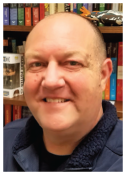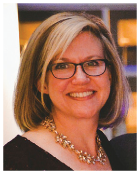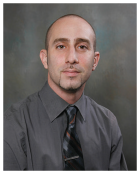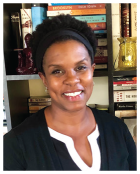Preface for instructors
Dear Colleagues:
Welcome to the eleventh edition of The Bedford Handbook. For this edition, I set the goal of creating a concise, affordable handbook. To do so, I did what I tell my students to do: revise with a purpose and seek feedback along the way. My purpose was clear—take a “less is more” approach to streamline the content. And I sought to learn from our Editorial Advisory Board, a talented team of writing faculty (see p. vii). The Bedford Handbook you hold in your hands has been reimagined for your students, at roughly half the size and half the cost of the previous edition, with everything your students need to become confident, successful college writers.
It sounds easy enough, almost like a mantra: look closely at each word, sentence, and section, then decide whether it is essential. Of course, some sections were easy to cut. Others, less so. For example, lengthy instruction about brainstorming and freewriting seemed nonessential—as did information about how to manage computer files. And multiple pages of instruction about taking notes could effectively be reduced, I discovered, to a practical “how to” page on taking notes responsibly.
It was time, in the eleventh edition, to rethink everything. This “less is more” approach gave me an opportunity to look squarely at each handbook section, thinking about what college writers need to know about quoting, summarizing, and paraphrasing sources, for example, or about building paragraphs and punctuating sentences. I wanted to find the essence of each grammar and research lesson and convey these lessons in practical, straightforward language. I wanted the handbook to answer students’ big questions about constructing a thesis statement and writing persuasive arguments. Along the way, I learned (again) a central lesson we offer our students about the power of language: choose specific words and make each word count.
As I worked with our wonderful Editorial Advisory Board, I asked questions about their student writers’ challenges and about the handbook sections their students find most useful. We weighed each decision about what to cut, preserve, and add. Our reviewers suggested we combine instruction on analyzing traditional and multimodal texts, and they welcomed our streamlined coverage of citing and integrating sources in MLA and APA styles. Removing redundancies and combining instruction made space for new features, such as instruction on detecting false and misleading sources and on paraphrasing and integrating sources—key research skills. Reviewers were firm about preserving what they called “one of The Bedford Handbook’s great strengths,” the practice exercises throughout the handbook. You’ll find these exercises in the eleventh edition as useful as ever.
One of our reviewers asked, “Classroom time is short over a semester, so why have extra explanations in the text that we skip over?” I heard these words in my head as I revised. No extra explanations; nothing to skip over; just the essentials. A smaller, briefer handbook offers many advantages, with its affordable price and ease of use. The Bedford Handbook, reaching back to the roots of composition handbooks, is designed to save students time and help them find answers quickly, so that everything they need to become successful college writers is at their fingertips.
I am eager to share this new edition with you.
Nancy Sommers
Meet our Editorial Advisory Board
The following fellow teachers of writing worked with us to reimagine The Bedford Handbook as a leaner resource for composition essentials. Students across the country will benefit from their expertise in the classroom and their passion for fostering writers’ skills and habits.

A careful reader and experienced teacher, Chuck Baker, Academic Program Director for English at Greenville Technical College, inspired us to rethink the organization of the chapters on the writing process. See especially the new placement of the paragraph coverage in Part 1.
Jacob Blevins, English department chair at Sam Houston State University, firmly believes that college-level research should go beyond reporting. He helped us shape the kinds of examples we use to teach students how to evaluate sources and integrate them as they write.

Christine Peters Cucciarre is Director of Composition at the University of Delaware. Her candid feedback guided us as we simplified the research coverage. She also found the new sentence guides—fill-in models to help students write with an academic voice (see 49c)—“tremendously helpful.”

With her students always in mind, Monica Dimauro, professor of English at Florida State College at Jacksonville, thanked us for leading with the term “academic writing” and confirmed that our new side-by-side presentation of MLA and APA (see 47–49) would work well in her courses.

Javier Dueñas is an assistant professor of English and Communications at Miami Dade College, North Campus. Javier’s detailed comments on the text were integral to the reimagined grammar coverage. He appreciates how the new edition “distills this content down to the essentials” with briefer, more direct explanations.

We were grateful for the expertise of Africa Fine, associate professor of English and Literature at Palm Beach State College, who helped us think through the challenges students face when writing with sources—most notably, how to express their own ideas in relation to the ideas of others.

Megan Fischer is a composition instructor at Angelina College. Her numerous comments on early manuscript helped shape the reorganized writing chapters. She is a fan of the new research chapters (see Part 9) and thinks “they provide clear, useful guidelines that demystify the research process for students.”
Bill Leach is the Online Liberal Arts Program chair and an English professor at the Florida Institute of Technology. He is passionate about handbook use in his course and believes that the new edition has “targeted the essential material that we can cover in the classroom setting.” He gave thoughtful suggestions that strengthened the content throughout the handbook.

Because grammar instruction is part of the mission of the writing program at her school, we appreciated comments from Jeannine Morgan, chair of the Communications department at St. Johns River State College, that were specifically related to content for multilingual writers. The condensed material in section 29 supports students’ development, according to Jeannine, and “focus[es] on the most common areas of difficulty [her] students tend to have.”

Anthony Podlaski is an assistant professor of English at Hudson Valley Community College and an experienced user of LaunchPad. He notes that he “depend[s] on The Bedford Handbook for coverage of clear sentences, word choice, style, and grammar.” His feedback, especially on sections such as the new Glossary of Usage (see 19), helped strengthen this edition.
See Acknowledgments for a list of additional reviewers.
Welcome to the Eleventh Edition
What’s new?
A portable, more affordable handbook means that students are more likely to have their help with them when they come to class, visit the writing center, and sit down to draft and revise. The new edition focuses on essential skills and habits students need to be successful college writers. With the help of a ten-member Editorial Advisory Board—writing teachers from two- and four-year colleges—we have made the content substantially more concise, reaching back to the roots of traditional coverage in composition handbooks. What’s more, a significantly lower price will appeal to your students—and the high value gets even higher when you choose to use an e-book, create a custom edition, or package the book with one or more supplements.
Better navigational aids help students locate useful content quickly.
- A new How to use this book page, developed after usability research with students from two- and four-year colleges, orients students to the major avenues for finding help.
- Chapter previews point to boxes, checklists, examples, and other key content that students need to find fast.
- Lists of documentation models appear at the beginning of the documentation chapters to minimize page flipping.
New help designed for beginning academic writers leads students to develop important academic skills and habits.
- How-to pages on paraphrasing sources and identifying false and misleading information guide students as they begin to work with sources. (See How to paraphrase effectively and How to detect false and misleading sources.)
- New sentence guides help students with the most basic academic scenario: presenting and responding to the views of others. Fill-in sentence starters (see 49c) provide useful models for participating in academic discourse and writing research essays.
- Newly reorganized and focused help for research writers teaches key skills such as integrating sources and avoiding plagiarism.
A complete series of resources for developing college writers
- A Student’s Companion to Hacker Handbooks, a new supplemental workbook for students in paired or co-requisite sections, provides a wide range of activities to help students practice the skills and habits they need to be successful academic writers. Designed specifically to help underprepared students succeed in a first-year writing course, it includes coverage of important college success strategies and a variety of activities and templates to help students improve their reading and writing performance. Graphic organizers help visual learners, exercises on thesis statements and topic sentences help writers with little academic writing experience, and grammar and research exercises help strengthen students’ work at the sentence level.
- Developmental Exercises for Hacker Handbooks offers a “grammar intensive” with 175 exercises that can be done right in the book, providing additional practice with all of the topics in the handbook. Exercise formats range from sentence sets to brief essays, and selections are thematically linked so that students can correct errors in realistic contexts.
- Working with Sources: Exercises for Hacker Handbooks provides low-stakes practice with foundational documentation skills, offering roughly 20 exercises per style (MLA and APA). Topics include integrating sources, avoiding plagiarism, and identifying citation elements. Visual exercises help students identify publication information on title pages and on websites.
Visit the catalog page for The Bedford Handbook to see a complete list of supplements and media. Go to macmillanlearning.com.
What hasn’t changed?
The Bedford Handbook, Eleventh Edition, still includes writing guides for common assignments, because you told us how useful these are in your courses. The new edition still emphasizes critical reading and academic writing. We know how much you value the practice exercises and activities that help with grammar, style, and punctuation topics, so we have retained exercises both in the print book and online. The coverage of MLA style is still as robust as ever. You’ll find professional support in our online English Community (community.macmillan.com), where you can follow our Bits Blog for teaching ideas, download professional resources, and access Teaching with Hacker Handbooks. Finally, know that you can still rely on outstanding service from your Bedford/St. Martin’s sales, marketing, and editorial teams—because we’re as passionately committed to the discipline as ever.
Custom options
Whether you have high or low enrollments, you can tailor content to your needs and help your students make the most of their handbook. Visit macmillanlearning.com/curriculumsolutions to learn more about building your own handbook.
- ForeWords for English. Developed especially for writing courses, our ForeWords English program is custom content made simple. Choose from a library of the most commonly requested content in easy-to-use chapters (12–16 pages each) to help you build the best possible text. ForeWords includes chapters on time management, business writing, and proposal writing, sentence templates for academic writing, and more—all easy to add to your custom edition of The Bedford Handbook. (Minimum enrollment is 200 copies.)
- Original material. Many schools choose to add original school-specific or program-specific content to create a custom edition that reflects their goals and expectations. You can easily add course outcomes, a common syllabus, information about the writing center, sample student writing, a custom cover, and more. (Minimum enrollment is 200 copies.)
- Bedford Select Handbooks. With very low minimums (25 copies), you can build your own composition resource from archived Hacker Handbooks content. Students pay only for the chapters you choose, and the process is a snap for instructors.
Acknowledgments
I am grateful for the expertise, enthusiasm, and classroom experience that so many individuals brought to the eleventh edition.
Reviewers
Natalie Belcher, Delaware State University; Shane Bradley, Erskine College; Kenneth Brosky, University of Wisconsin–Rock County; Heather Chacon, Greensboro College; Robin Colby, Meredith College; Nicole A. Cosentino, University at Albany; Howard Cox, Angelina College; Brock Dethier, Utah State University; Layla Dowlatshahi, Normandale Community College; Gwyn Enright, San Diego City College; Sallyanne H. Fitzgerald, Polk State College; Wendy L. Grosskopf, Bemidji State University; Mickey Hall, Volunteer State Community College; Melody Hargraves, St. Johns River State College; Joel B. Henderson, Chattanooga State Community College; Marie Hendry, State College of Florida–Venice; Jamie Henthorn, Catawba College; Max Hohner, Eastern Washington University; Kimberley M. Holloway, King University; John F. Jebb, University of Delaware; Laura Jeffries, Florida State College at Jacksonville; Heather Keller-Giltner, John Wood Community College; Laura La Flair, Belmont Abbey College; Jennifer Laufenberg, Bossier Parish Community College; Elizabeth McDowell, University of Delaware; Rebecca V. Mills, California State Polytechnic University, Pomona; Carmen Mise, Miami Dade College–North Campus; Loren Mitchell, Hawaii Community College; Jill Morris, Frostburg State University; Tracy Ann Morse, East Carolina University; Van Piercy, Lone Star College–Tomball; Dan Portincaso, Waubonsee Community College; Daniel Powell, Florida State College at Jacksonville; Kevin M. Rulo, The Catholic University of America; Ed Sams, San Jose State University; Susan Slavicz, Florida State College at Jacksonville; Amy D. Stackhouse, Iona College; David Stivers, Savannah College of Art and Design; James D. Suderman, Northwest Florida State College; Nancy Wilson, Texas State University.
I would like to acknowledge the generous contributions of our Editorial Advisory Board and their important role in developing this edition of The Bedford Handbook. Their smart, insightful questions and critiques showed us where we met our goals and where we missed the mark. Their close reading of the manuscript and their thoughtful, practical suggestions helped us achieve our mission—to find the essential handbook instruction students need to become successful college writers.
See Meet Our Editorial Advisory Board to read about our Editorial Advisory Board.
Contributors
I am grateful for contributions from the following individuals, all fellow teachers of writing: Margaret Price, associate professor of English at The Ohio State University, and Rosalie Roberts, adjunct instructor of English at Clark College, for helping me to think about new content on pronouns, gender, and audience awareness; and Sylvia Basile of Midlands Technical College, Sandra Chumchal of Blinn College, and Sarah Gottschall and Paul Madachy of Prince George’s Community College, for contributing material on integrating sources, reading strategies, avoiding plagiarism, and audience, respectively, to A Student’s Companion to Hacker Handbooks, an exciting new tool for ALP and co-requisite sections of composition.
Students
I extend my gratitude to the following students for letting us adapt their work as models throughout the handbook: Sophie Harba, Sam Jacobs, Emilia Sanchez, and April Bo Wang.
Bedford/St. Martin’s and beyond
A handbook is a collaborative writing project, and it is my pleasure to acknowledge the enormously talented Bedford/St. Martin’s editorial team, whose focus on students informs each new feature of The Bedford Handbook. Edwin Hill, vice president for humanities editorial, and Leasa Burton, executive program director for English, generously offer their deep knowledge of the field of composition. Stacey Purviance, executive program manager, brings her creative energy and enormous talents to The Bedford Handbook. I am grateful for her dedication to the handbook and for her commitment to designing new ways to pair print and digital content. Many thanks to Bedford colleagues Joy Fisher Williams and Vivian Garcia, who, like me, spend many hours on the road and in faculty offices, for their treasured advice. Doug Silver, product manager for English, helps us to reimagine writers’ and teachers’ opportunities with digital tools.
Michelle Clark, senior executive editor, is the editor every author dreams of having. She manages to be exacting and endearing all at once—a treasured friend and colleague and an endless source of creativity. Michelle combines imagination with practicality and hard work with good cheer. Melissa Rostek, associate editor, brings fresh ideas, bold questions, and excellent editorial instincts to our collaboration. I am grateful for her steady, judicious thinking as we debated cutting and condensing various sections; I am fortunate to work with such a talented editor. Barbara Flanagan, senior media editor, sets the bar high for all of us and we scramble to live up to her expectations. Barbara brings unrivaled expertise in documentation and manages content development for LaunchPad Solo for Hacker Handbooks. It is a pleasure to work with Barbara and to benefit from her wisdom and good sense on important details. Thanks also to Aislyn Fredsall, editorial assistant, for overseeing the review and permissions processes.
Many thanks to the media production team for delivering engaging handbook tools, including new e-books, for students in the digital age. Thanks also to Gregory Erb, senior content project manager, for a careful eye and smart management of production; to Sally Lifland, copyeditor, for thoroughness and attention to detail; to Claire Seng-Niemoeller, who kept our design clean, simple, and elegant; and to Billy Boardman, senior design manager, who has introduced a striking new cover.
Last, but never least, I offer thanks to my own students who, over many years, have shaped my teaching and helped me understand their challenges. Thanks to my friends and colleagues Jenny Doggett, Joan Feinberg, Suzanne Lane, Maxine Rodburg, Laura Saltz, and Kerry Walk for sustaining conversations about the teaching of writing. And thanks to my family: to Joshua Alper, an attentive reader of life and literature, for his steadfastness across the drafts; to my parents, Walter and Louise Sommers, who encouraged me to write and set me forth on a career of writing and teaching; to my extended family, Ron, Charles Mary, Alexander, Demian, Devin, Liz, Kate, Sam, Terry, Steve, and Yuval, for their good humor and good cheer; and to Rachel and Curran, Alexandra and Brian, world-class listeners, witty and wise beyond measure, always generous with their instruction and inspiration in all things that matter. They share my thrill when they hold this handbook in their hands. And to my grandchildren, Lailah and Oren, thanks for the joy and sweetness you bring to life.
Nancy Sommers
